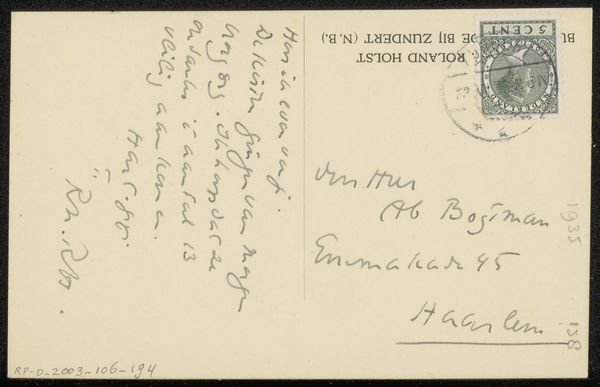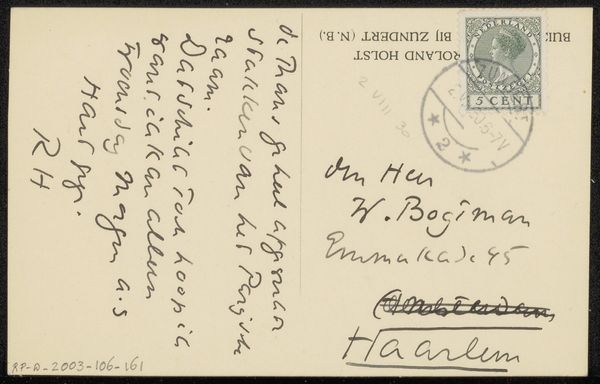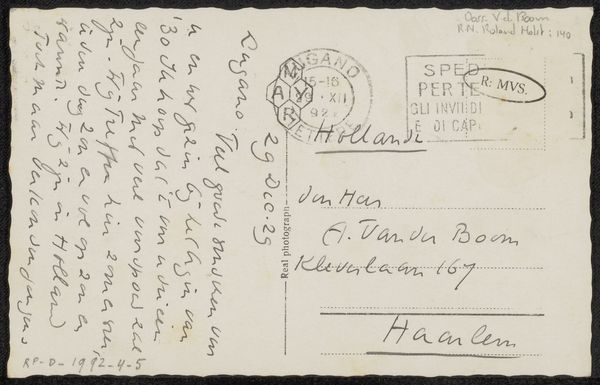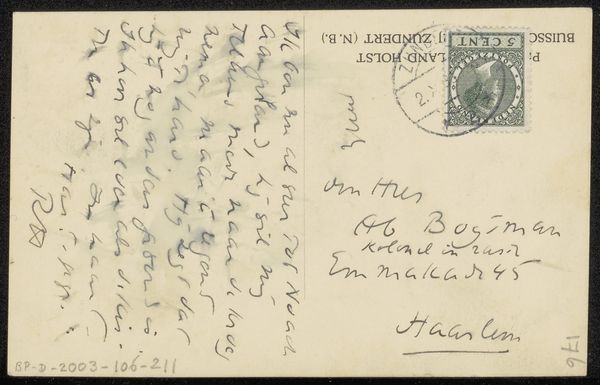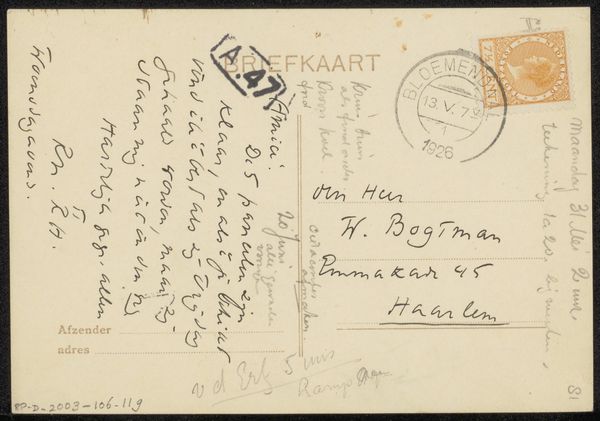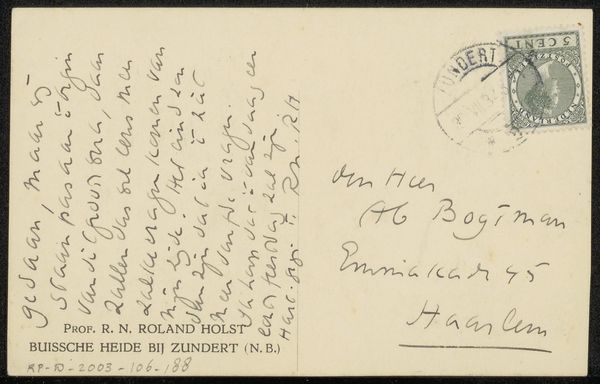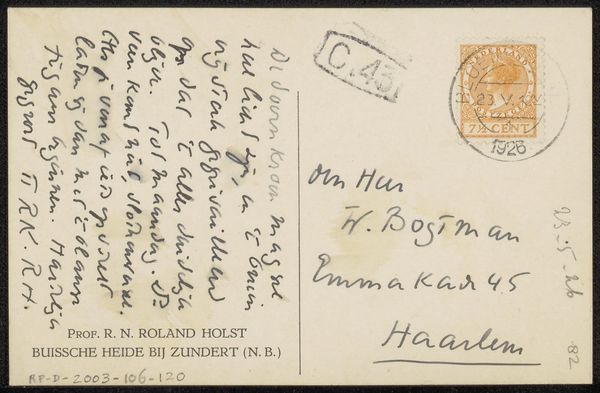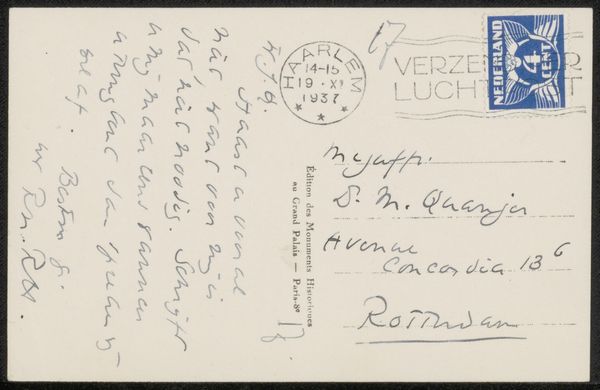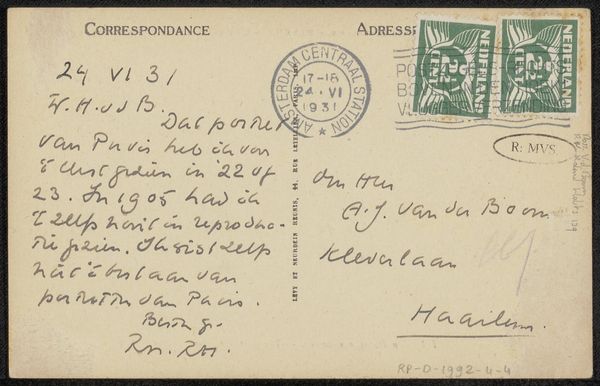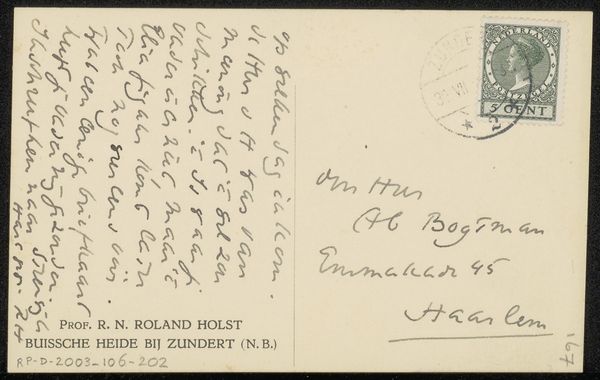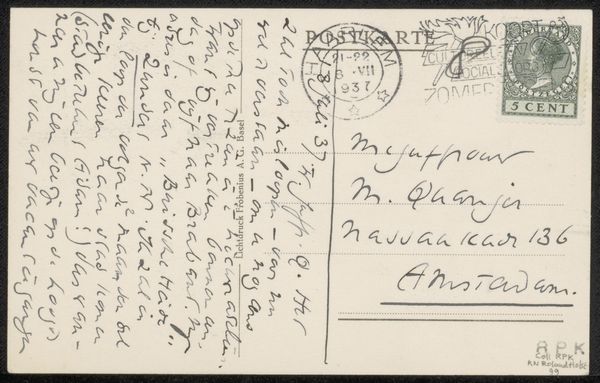
drawing, graphic-art, ink, pen
#
drawing
#
graphic-art
#
hand-lettering
#
pen sketch
#
hand drawn type
#
hand lettering
#
personal sketchbook
#
ink
#
hand-drawn typeface
#
pen-ink sketch
#
pen work
#
sketchbook drawing
#
pen
#
sketchbook art
#
calligraphy
Copyright: Rijks Museum: Open Domain
Curator: Here we have a postcard from artist Richard Nicolaüs Roland Holst, titled "Prentbriefkaart aan A. van der Boom," likely dating back to 1929. It’s executed in pen and ink, and it’s currently held in the Rijksmuseum. Editor: It strikes me as quite intimate. There's something inherently personal about handwritten correspondence, like catching a glimpse into a private world, even though the handwriting itself is challenging to decipher at first. Curator: Indeed. Postcards, while seemingly mundane, were crucial communication tools. The text contains snippets of conversation, travel plans, and everyday happenings. It gives insight into Roland Holst’s social circle and his habits. Editor: And the choice of script! Roland Holst embraced a distinct, almost deliberately crafted, hand. Calligraphy here acts as a symbol of learnedness and sophistication, hinting at the intellectual circles in which the artist operated. One could argue that calligraphy elevated even casual correspondence to the level of art. Curator: Exactly. Consider the historical context—the late 1920s was a period of shifting social values and burgeoning artistic experimentation. Roland Holst was very committed to socialist and humanist ideals and this aesthetic elevates daily exchanges into meaningful gestures. Editor: It's intriguing how this single piece connects so many symbolic threads: travel, communication, the role of handwriting versus print, all framed within Roland Holst's particular aesthetic values. There's a richness of context that elevates it beyond mere ephemera. Curator: And that tension between public and private makes the work truly compelling. Editor: I agree, thinking about what visual markers we leave behind can give a future audience a view into who we are and the values we held.
Comments
No comments
Be the first to comment and join the conversation on the ultimate creative platform.

